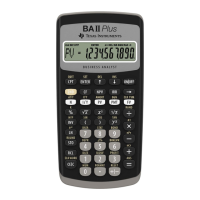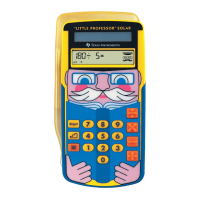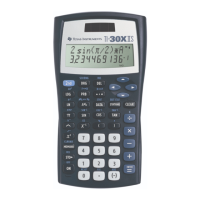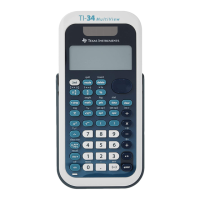Number Bases 679
Number Bases
Number BasesNumber Bases
Number Bases
Entering and Converting Number Bases
Entering and Converting Number BasesEntering and Converting Number Bases
Entering and Converting Number Bases
Regardless of the Base mode, you must always use the appropriate prefix when
entering a binary or hexadecimal number.
Entering a Binary or Hexadecimal Number
Entering a Binary or Hexadecimal NumberEntering a Binary or Hexadecimal Number
Entering a Binary or Hexadecimal Number
To enter a binary number, use the form:
To enter a hexadecimal number, use the form:
Note: You can type the b or h in the prefix, as well as hex characters A–F, in uppercase
or lowercase.
If you enter a number without the
0b or 0h prefix, such as 11, it is always treated as a
decimal number. If you omit the
0h prefix on a hexadecimal number containing A–F, all
or part of the entry is treated as a variable.
0b binaryNumber (for example: 0b11100110)
Binary number with up to 32 digits
Zero, not the letter O, and the letter b
0h
hexadecimalNumber (for example: 0h89F2C)
Zero, not the letter O, and the letter h
Hexadecimal number with up to 8 digits
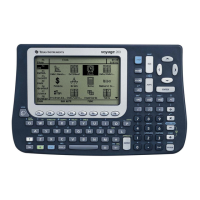
